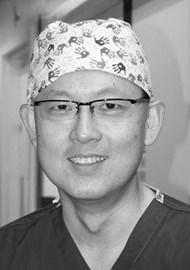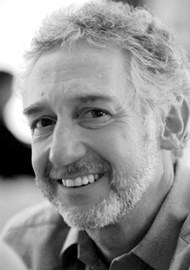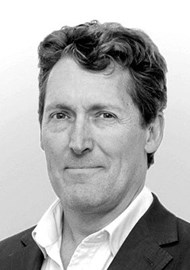Michael Kuo, David Albert and Mike Saunders have put their collective heads together to predict the future of ENT surgery in children; will there be a rise in workload due to increasing survival of children with complex medical problems? Or a decrease due to changing disease patterns?
Niels Bohr famously said that “prediction is very difficult, especially if it is about the future.” The editor has chosen those time spans carefully: 15 years should see the maturation of current innovations; 50 years constitutes a time span where prediction could be more accurately described as speculation.
At the start of the century, Gibbin and Saunders speculated about the future of paediatric otolaryngology, predicting increasing specialisation, gene therapy for hearing loss and better targeted immune therapy for rhinosinusitis [1]. Looking back, it appears that translation of basic science from the laboratory to daily clinical practice takes longer than most of us appreciate.
Thirty years ago, the first full-time paediatric otolaryngologist in the United Kingdom was appointed at Great Ormond Street Hospital (DA). Now there are over 40 consultant otolaryngologists in the UK who solely treat children. The subspecialist requirements for the treatment of children is reflected in the recognition of paediatric otolaryngology by the UEMS (Union Européenne Des Médecins Spécialistes). It seems likely that, by 2070, otolaryngology will have followed other specialities (cardiothoracic, neurosurgery, general surgery) in separating paediatric from adult practice completely. Children, even at secondary care level, are increasingly being seen in dedicated children’s hospitals with obvious benefits to the child. The provision of paediatric otolaryngology will almost certainly continue to become concentrated in larger paediatric centres within the next 15 years. However, this leads to logistical challenges; currently around a third of patients seen by general otolaryngologists are under the age of 16 years. Whether the initial treatment of common childhood ENT conditions will continue to be a part of general otolaryngology, or a different model of care (e.g. hub and spoke) will develop, remains to be seen.
“There will always be a place for laryngotracheal surgery, but the nature of that surgery is changing now in front of our very eyes, let alone in half a century.”
Medical treatment of allergy has promised much, but essentially changed little, in recent memory. Within 50 years one would hope that more effective molecular treatments are available but, equally, it seems likely we will still be using topical steroids and systemic antihistamines in 15 years. The elusive hunt for effective medical treatment for glue ear will continue much the same. Of course, predictions cannot take account of chance findings - who could have predicted that a beta blocker would have all but stopped the evolution of the surgical treatment of subglottic haemangioma from tracheostomy and wait, to intralesional steroid injection to open excision through a laryngofissure?
There will always be a place for laryngotracheal surgery, but the nature of that surgery is changing now in front of our very eyes, let alone in half a century. The incidence of acquired laryngeal stenosis is decreasing with improved neonatal tube care but also courtesy of the tender loving care of paediatric laryngologists, deploying endoscopic manoeuvres to limit damage.
However, it will be novel biological agents which reduce scar formation which will bring the next stepwise change in prevention of acquired laryngeal stenosis. It would be nice to think that the effective but blunt methods of managing vocal cord paralysis (unilateral or bilateral, acquired or congenital) will be largely replaced by more physiological alternatives by 2035, and hopefully tracheostomy, arytenoidectomy, posterior laryngeal augmentation and suture lateralisation will have been rendered redundant for management of this condition by 2070. However, techniques of laryngeal re-innervation have been around for a long time and have so far proven little real benefit. It would be more aspiration than speculation (no pun intended) for tracheostomy itself to become obsolete for all modes of laryngeal obstruction.
Although the parameters set for us in this article exclude imaging, wearables and robotics (which will be covered by other authors in this series), in no other area would one expect technological advances to be of greater added value than in paediatric otology. Endoscopic approaches will be complemented by advances in robotics and superior imaging to render much of middle ear surgery being incisionless within half a century. The advance in electronics and technology have certainly outstripped advances in surgery in the last decades; in the race between cochlear regeneration and the human/electronic interface in hearing rehabilitation, the latter will still be in the lead at 15 years but possibly overtaken by the former at 50 years.
“In no other area would one expect technological advances to be of greater added value than in paediatric otology.”
Will disease patterns change? Some undoubtedly will. Respiratory papillomatosis is a relatively uncommon disease but in those who are affected, the impact on the children’s lives, as well as the workload to the paediatric otolaryngologist, are considerable. Although the developments in drug treatment for the condition have been disappointingly slow over the last 20 years, PHE data reveals an 80% decrease in HPV 6 and 11 associated genital warts since the introduction of the UK HPV vaccination programme 10 years ago. One would anticipate a proportionate effect on the incidence of RRP within 15 years and certainly by 50 years. The number of children treated with adenotonsillectomy for OSA has risen in the last three decades. Whether this is simply an increase in awareness of the condition or a change in the population is unclear. More children are born and surviving with complex congenital and genetic disease. Most of these complex children have associated ENT problems.
It seems unlikely that paediatric ENT surgeons will be short of work for the next 15 years at least. Whether better antenatal testing and gene therapy will reduce the paediatric ENT surgeon’s workload by 2070 remains to be seen.
Reference
1. Gibbin KP, Saunders MW. The future of paediatric otolaryngology. The Journal of Laryngology & Otology 2000;114:573-5.







